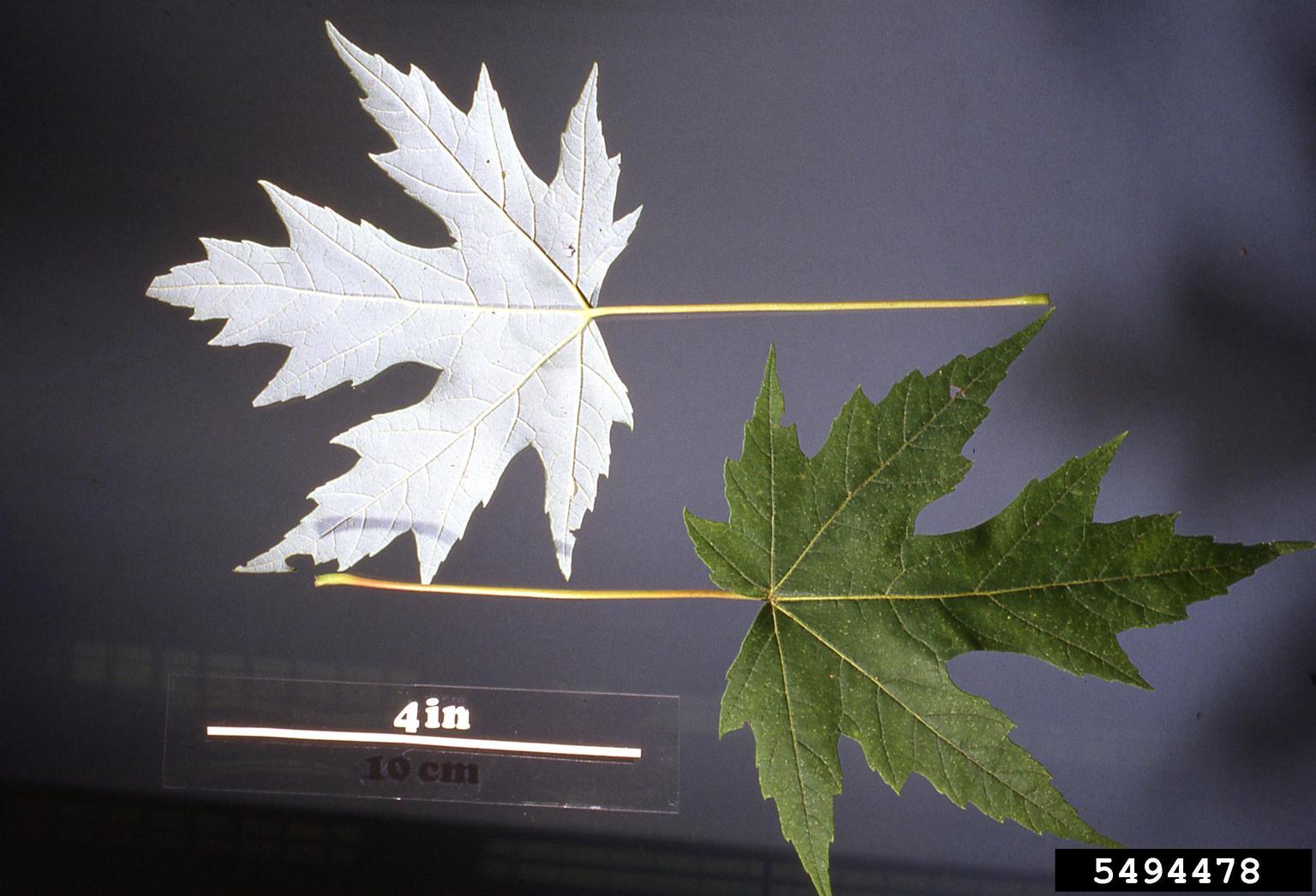Silver maple (ASA)
Introduction
The silver maple is a relatively fast-growing deciduous tree. It is tolerant of wet conditions and is often found as a riparian species and because of this sometimes-called, water maple. The name silver maple is associated with the pale silvery underside of the leaf. The tree can be quite striking in leaf as the long petioles allow the leaves to flutter in a breeze revealing flashes of the silvery underside.
Silver maple is categorised as a plot-stage species. These are species that have demonstrated some positive silvicultural characteristics at the Specimen-stage and are now subject to further testing and development in a limited number of trial plots.


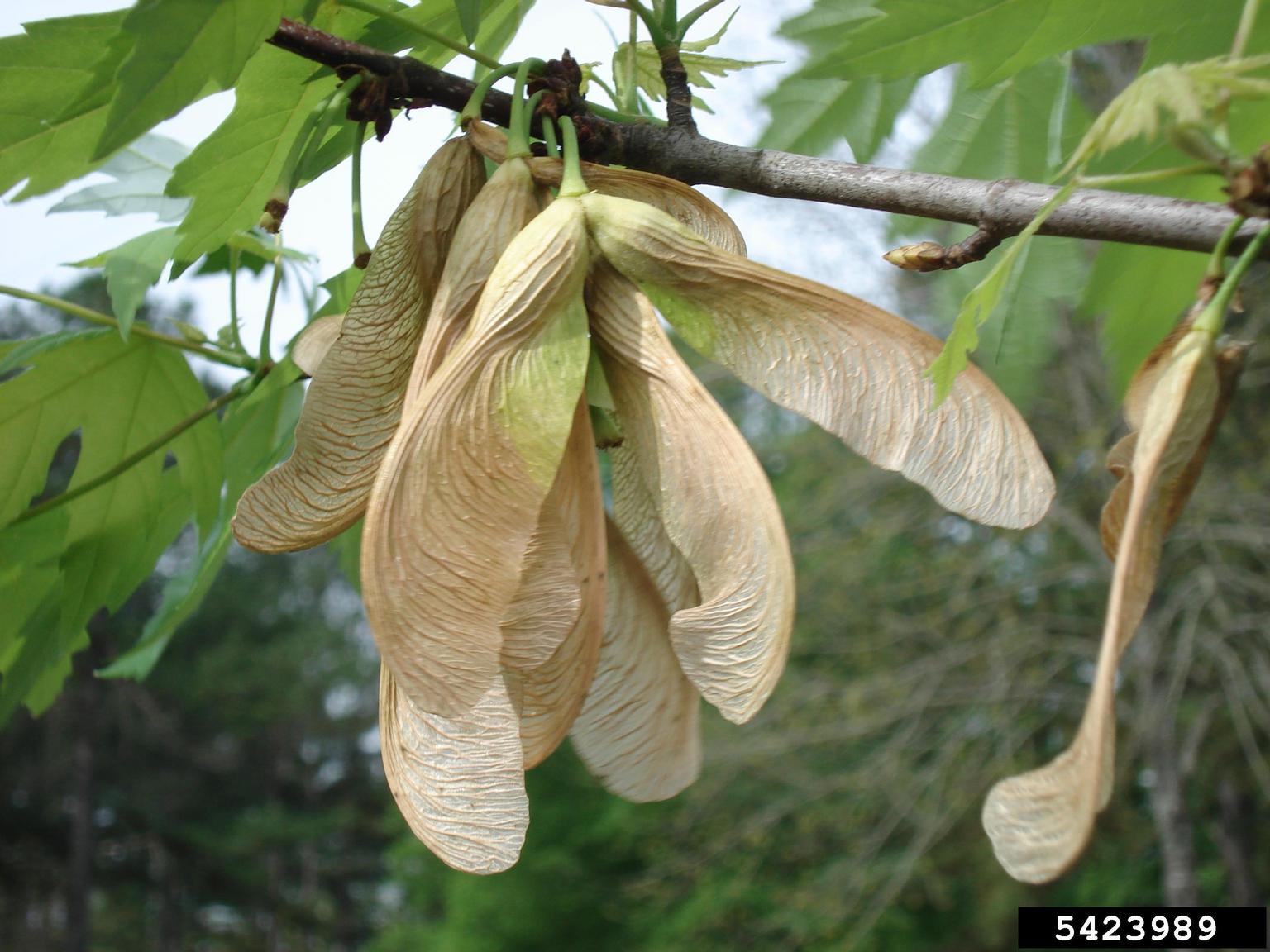
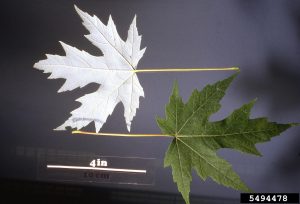
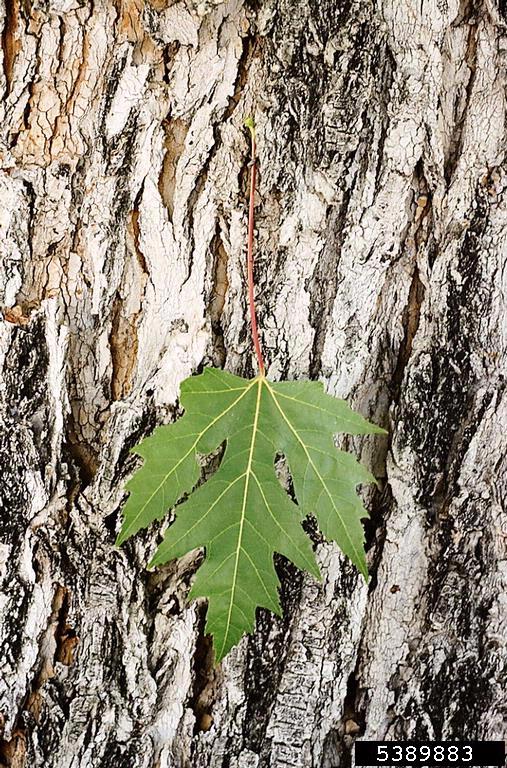
Range
Native to eastern provinces of southern Canada and the eastern United States.
Provenance Choice
No provenance trials have been established in Britain so seed sources from the northern part of the natural range should be used.
Site Requirements
Best growth is found on soils of medium nutrient regime and of moist soil moisture status, such as well drained alluvial soils. It is not suited to alkaline, very dry, very poor, or peat soils. It is cold hardy but is not as tolerant of exposure as sycamore.
Further detail on the site requirements of silver maple fir in current and future climates can be examined using the Forest Research Ecological Site Classification Decision Support System (ESC).
ECOLOGICAL SITE CLASSIFICATION TOOL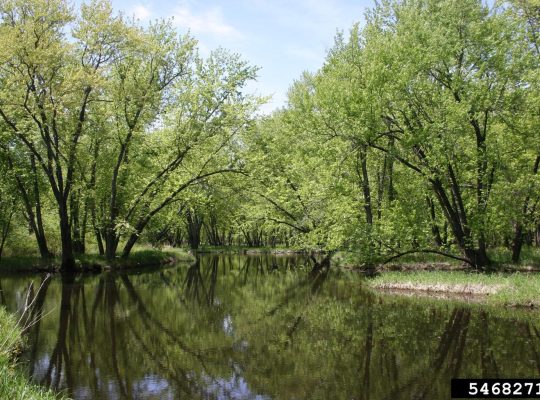
Silviculture
Silver maple has shown promising growth in several plots in southern Britain, but our knowledge of appropriate silviculture is limited and is based upon experience in its natural range. There it generally grows in mixture with other broadleaved species along river valleys (aka ‘bottomland hardwoods’). It is an early successional species with rapid early height growth and has greater tolerance of waterlogging than other maple species. It is moderately shade-tolerant, but this is influenced by site quality being higher on better sites.
Good control of competing vegetation is necessary for satisfactory establishment, and it can respond well to site cultivation. Once established it will make rapid height growth, but this can slow down after canopy closure unless heavy thinning is used to reduce competition from neighbouring trees. On the best sites productivity is likely to be similar to that of Norway maple: the tallest tree in Britain is around 30 m. The wood is quite brittle so that trees of this species can be severely damaged by strong winds. A species that coppices readily and grows rapidly after cutting.
Seed production can start when trees are still young, but the development of viable seed has been rare in Britain and there are few reports of natural regeneration. In its native range it is considered shade-tolerant on good sites and intolerant on poor sites. The species would appear best suited to being grown in mixed woodland on moist soils in lowland Britain.
Pests and Pathogens
Sapstreak disease, caused by the fungus Ceratocystis virescens, is a serious threat to silver maples in North America, although the pathogen is not present in Europe. Like other maples, it is also susceptible to Verticillium wilt. Bark stripping by grey squirrels could be a serious risk in larger plantings.
See our other tools and resources
Further Resources
External
Further information
In addition to the general sources of information for species the following are useful for silver maple.
Wilson, SMcG, Mason, B., Savill, PS and Jinks, R. (2017) Noble Hardwood Alternatives to Ash. Quarterly Journal of Forestry, 111, 166-182.

